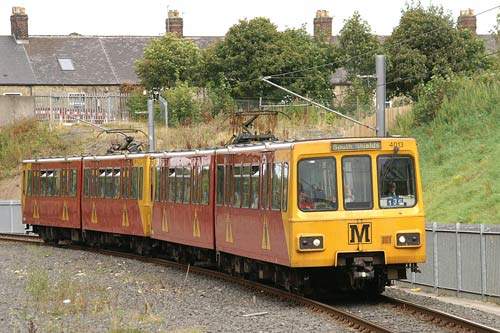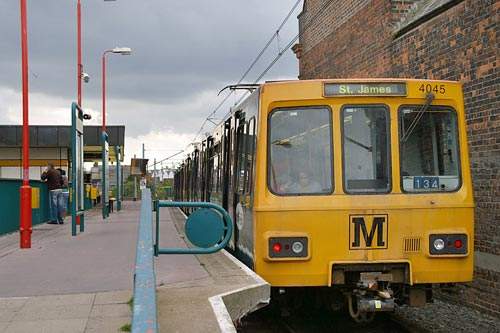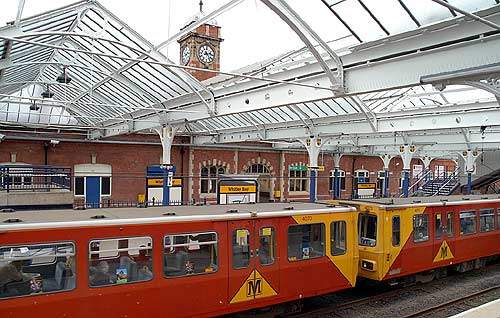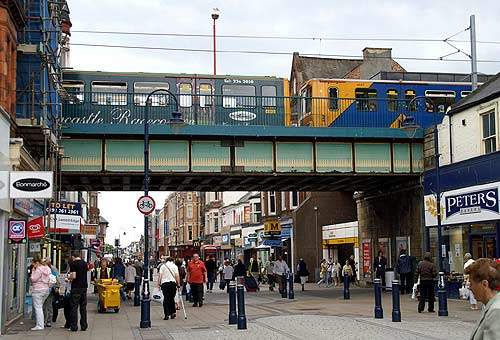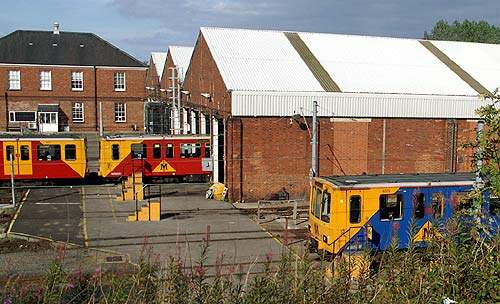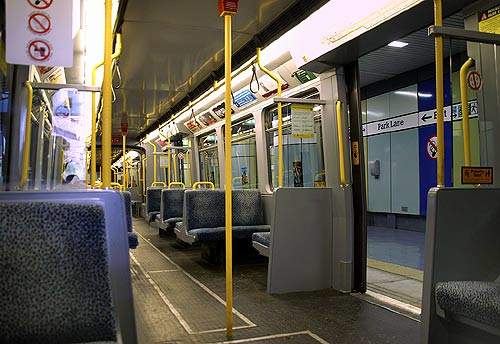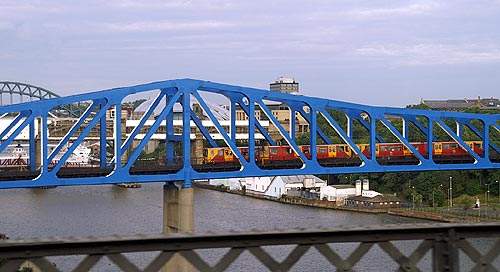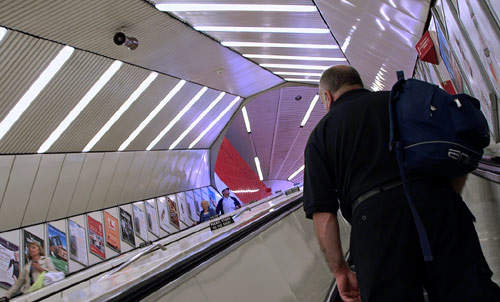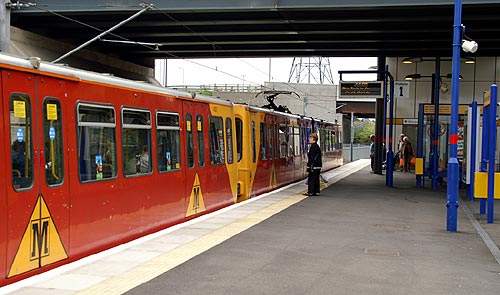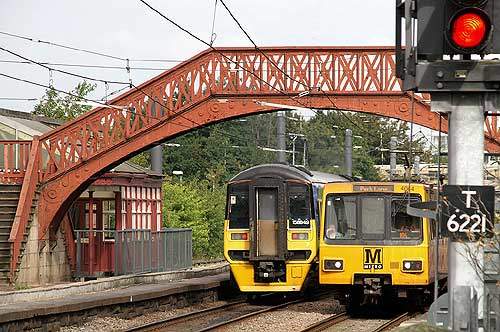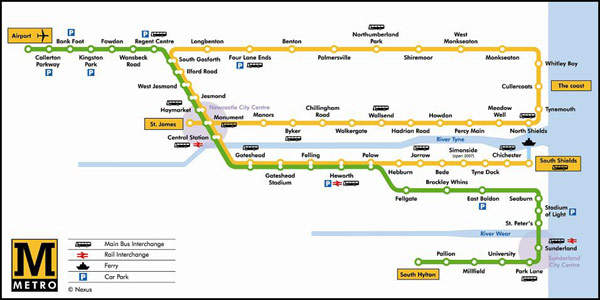The new era of light rail in the UK was ushered in by the first phase of the Tyne and Wear (T&W) Metro. The metro is based around Newcastle upon Tyne, the major conurbation and commercial centre of north-east England. The T&W Metro project echoed a decision in the early 20th century by the North Eastern Railway to electrify urban routes that had lost business to new tramways.
Lines north and south of the Tyne operated on a third-rail system from 1904 to 1967, when British Rail decided not to renew electrical equipment and replaced services with diesel multiple units. With minor surface additions and in-tunnel sections in central Newcastle and southern neighbour Gateshead, these routes were to form the basis of the new Metro operation.
In the early 1970s, a time of social and economic concern for the UK, poor public transport was pinpointed as a serious brake on the area’s development. A heavy rail system radiated from Newcastle Central station to many suburban areas, but it was not suitable for modern passenger demands and changes in the local economy. The 1970 Tyne-Wear Plan suggested major investment to convert the North Tyne loop and South Shields branch from heavy rail to modern rapid transit standards.
The project
Tunnelling under the centre of Newcastle began in 1974 along with work on four principal exchange stations (Four Lane Ends and Regent Centre in the north and Gateshead and Heworth to the south), each strategically close to major road intersections.
The first opening was the northern route between Tynemouth and Haymarket via the coastal resort of Whitley Bay and South Gosforth, location of the system’s depot. The first phase opened in stages between 1980 and 1984. Newcastle International, to become one of the UK’s most successful regional airports, gained a Metro link in 1991.
Despite its name, initial phases of Tyne and Wear Metro did not serve Wearside, centred on the very large town (later city) of Sunderland. Tyne and Wear Passenger Transport Authority and Railtrack joined forces to plan and implement the extension of the network to South Hylton via Sunderland, a project known as Sunderland Direct. Approval for the extension came in 1999, and the £100m project was completed using mainly existing heavy rail alignments.
In spite of lower than expected use in some parts, notably the (Sunderland) Park Lane to South Hylton section, the Metro has been a great success. Demand for extensions has risen over the years, together with the need for other enhancements.
In February 2010, the UK Government approved funds of £580m for developing and maintaining the metro system. Out of the earmarked amount, about £350m is allocated for development and about £230m is allocated to maintain and operate the metro for nine years.
A contract to operate T&W Metro’s stations and trains was awarded to DB Regio Tyne and Wear following the confirmation of the funds. DB Regio will operate the metro system from April 2010.
Infrastructure
Despite 44.5km out of the initial 55.8km being built on or alongside already existing railway, the project was complicated as much of the existing infrastructure required renewal, as well as needing new stations, signalling and electrification equipment.
Of the new routes, 7.6km are in tunnel, mainly under central Newcastle and Gateshead, and 4.5km of new surface railway was built. There was also a new 352m high level crossing of the Tyne, the Queen Elizabeth II Bridge, immediately south of the main heavy-rail interchange, Newcastle Central. In January 2010, Nexus replaced all 178 lights of the North Shields tunnel.
The underground four-platform Monument station in central Newcastle is the system’s busiest. A short westward line to St James allows for the ‘pretzel’ pattern of services on the Yellow line, with St James-South Shields services passing twice through Monument on different platforms. The Green Line accommodates Airport-Park Lane/South Hylton services.
The Sunderland extension was built by Railtrack, then private national rail infrastructure owner, which ensured full integration with the heavy rail services using the same corridor between Pelaw and Sunderland, a unique application of the ‘Karlsruhe Model’ in the UK. Like much of the airport line, Sunderland-South Hylton used a closed heavy rail alignment.
The Metro’s 59th station, Northumberland Park, opened in December 2005 and demonstrated the flexibility of the system in both encouraging and supporting new developments. The new station is part of a fast growing suburb, claimed to have 1,500 homes within 800m of the station and with a direct bus link provided by Nexus to business parks and North Shields ferry terminal.
A £50m investment programme (designated Reinvigoration Phase 1) is underway for works up to 2010 that include new ticket machines and barriers at 13 stations, a new station (the system’s 60th) at Simonside on the South Shields line which opened in March 2008, Metrocar improvements, and infrastructure and technology overhauls.
A £7m modernisation of Network Rail-owned sub-surface Sunderland station includes rebuilt platforms and installation of escalators to the concourse. The station is served by ten Metro services hourly as well as Northern Rail regional trains and by open-access operator Grand Central to York and London.
Sited at the northern end of Newcastle’s Northumberland Street shopping area, the underground Haymarket station (due to renamed Haymarket Hub) has undergone a £20m private development financed by Closegate in partnership with Nexus. A four-storey building above the station will contain leisure and office space.
Rolling stock
Distinctly different from other UK suburban railway or tram stock and owing much in character to some German Stadtbahn vehicles, ‘Metrocars’ were designed and constructed in Birmingham by Metro-Cammell (later Alstom). Sub-contracting brought equipment supply by GEC Traction and Düwag.
Trainsets are formed of articulated six-axle twin vehicles, each 27.8m-long, with seats for 68 passengers and standing room for up to 232. Ninety twin-car sets are in use, all rebuilt between 1984 and 1987. Power supply is 1,500V DC through overhead wires, the only application of this system now operating in the UK.
Originally designed to be coupled in trains of up to three twin-car sets, most services are operated by two-set formations. Each Metrocar set is equipped with air brakes and air-operated doors, with electro-magnetic emergency track brakes.
No new vehicles were needed for the Sunderland extension, although more intensive fleet usage was necessary to meet the extra service demands. The fleet was refurbished in-house at South Gosforth between 1995 and 2000.
Signalling and communications
Magnetic track circuits operate fixed-colour light signalling, generally three-aspect in tunnels and two-aspect on surface lines. A train identification and control system carries information from on-board transponders to track-level equipment, which operates the points and station information systems. T&W Metro uses a train-stop system based on the Indusi signalling system used by German and Austrian railways.
Metro Control Centre at South Gosforth has two-way radio contact maintained with the trains, which are driver-only operated. In September 2007 a new central system control desk for all signalling and communications was installed to replace the original equipment.
The signalling system between South Gosforth and Haymarket will be replaced in the first quarter of 2010. Nexus will invest £1m in the signalling system renewal project.
Stations have passenger alarm points and are monitored by closed-circuit TV. Nexus offers a comprehensive range of tickets covering the area, incorporating the services of other public transport operators that are designed to stimulate demand among various market segments that include commuters, young people, shoppers and leisure use.
The future
In January 2007, future plans for the system were put forward in the £600m ‘Re-Invigoration of Metro’ programme by the transport authority. To support their case, Nexus identified some implications for the area if the Metro was allowed to fall out of use through a failure to invest. These include 15 million more yearly car journeys, a four-fold increase of buses over the key artery, the Tyne Bridge, double the number of buses in central Sunderland, and fewer visitors to the central areas, thereby damaging economic activity.
In July 2008 Nexus announced that in addition to underwriting the system’s operating costs up to 2019, £300m had been committed by the central government, the largest single investment in the system since it opened.
Reinvigoration Phase 2 is scheduled to begin in April 2010, a nine-year programme for station modernisation costing £45m across the network, fleet refurbishment, power supply modernisation, a new train communications system and an overhaul of the basic system infrastructure that dates back to the building of the heavy rail lines adopted to create the Metro.
Phase 3 looks ahead to 2019 with a further £300m investment that will see the entire passenger fleet – put at £163m and due for completion by 2023 – and signalling system replaced and further infrastructure measures.
Nexus will seek additional funding to improve the South Shields, North Shields and Heworth stations, add more park-and-ride facilities and remove operational limits on the South Shield service by installing double track throughout.

